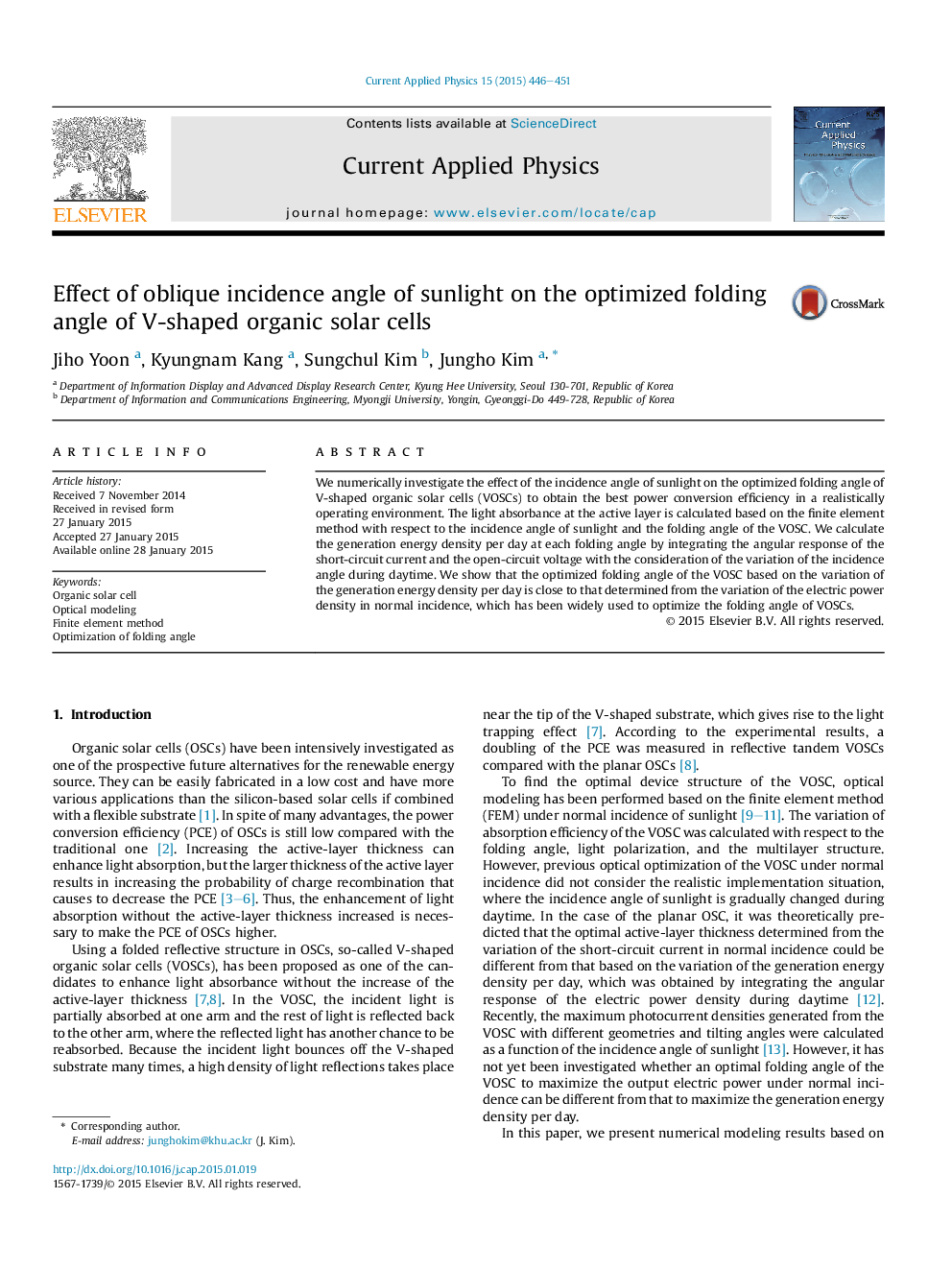| Article ID | Journal | Published Year | Pages | File Type |
|---|---|---|---|---|
| 1786035 | Current Applied Physics | 2015 | 6 Pages |
•V-shaped organic solar cells (VOSCs) were optically modeled based on the FEM.•Angular response of VOSCs was calculated during daytime.•The energy density per day was used to optimize the folding angle of VOSCs.
We numerically investigate the effect of the incidence angle of sunlight on the optimized folding angle of V-shaped organic solar cells (VOSCs) to obtain the best power conversion efficiency in a realistically operating environment. The light absorbance at the active layer is calculated based on the finite element method with respect to the incidence angle of sunlight and the folding angle of the VOSC. We calculate the generation energy density per day at each folding angle by integrating the angular response of the short-circuit current and the open-circuit voltage with the consideration of the variation of the incidence angle during daytime. We show that the optimized folding angle of the VOSC based on the variation of the generation energy density per day is close to that determined from the variation of the electric power density in normal incidence, which has been widely used to optimize the folding angle of VOSCs.
